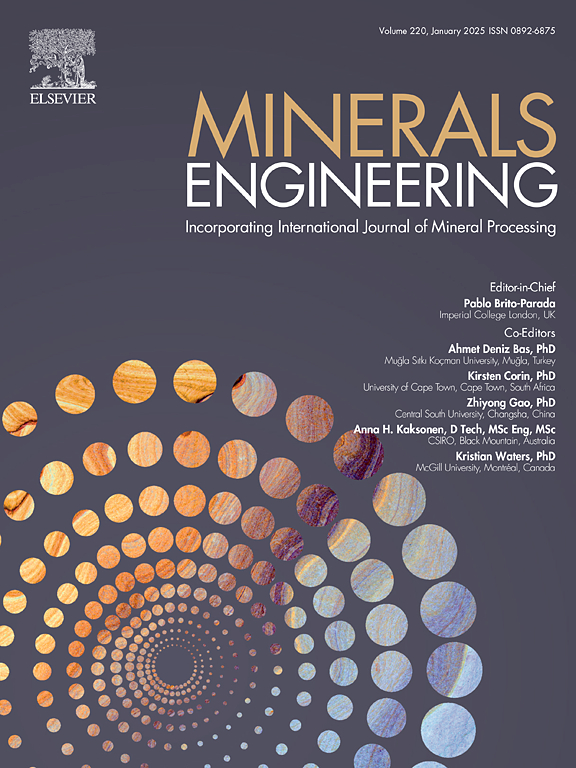Bridging micro-to-nano scales for metal ore characterization via one-shot super-resolution
IF 4.9
2区 工程技术
Q1 ENGINEERING, CHEMICAL
引用次数: 0
Abstract
The mineral composition, micro/nanostructure, and distribution of ore materials are commonly visualized, analyzed, and characterized using 2-dimensional (2D) scanning electron microscopy (SEM) and 3D X-ray micro-computed tomography (micro-CT). While SEM offers sufficient resolution for nano-scale feature characterization, it is limited to 2D structural and property insights. Micro-CT allows for 3D structural analysis, but its resolution is inadequate for capturing fine features. Additionally, tomography involves a trade-off between resolution and field of view (FOV). Practical scales often involve ore samples ranging from 10 mm to 80 mm in diameter, but acquiring fine-scale information (1 ) typically reduces the sample diameter to 2 mm. To address these gaps, a super-resolution technique is proposed that integrates micro-CT at practical scales with fine-scale data. The method uses a segmentation-guided one-shot super-resolution network to bridge 2D SEM () and 3D micro-CT () for four Fe-rich ore particles with varying mineralogy, texture, and porosity. Testing on unseen micro-CT sections shows an error of 10% compared to SEM data. An algorithm is proposed to transform the 3D super-resolved images into coarsened partial volume maps that contain SEM scale information but retain the micro-CT length scale. Porosity calculated from the coarsened maps agrees with experimental measurements, differing by less than 1%. This proposed workflow effectively infers nanoscale information at the micro-CT scale, substantially enhancing ore characterization.

求助全文
约1分钟内获得全文
求助全文
来源期刊

Minerals Engineering
工程技术-工程:化工
CiteScore
8.70
自引率
18.80%
发文量
519
审稿时长
81 days
期刊介绍:
The purpose of the journal is to provide for the rapid publication of topical papers featuring the latest developments in the allied fields of mineral processing and extractive metallurgy. Its wide ranging coverage of research and practical (operating) topics includes physical separation methods, such as comminution, flotation concentration and dewatering, chemical methods such as bio-, hydro-, and electro-metallurgy, analytical techniques, process control, simulation and instrumentation, and mineralogical aspects of processing. Environmental issues, particularly those pertaining to sustainable development, will also be strongly covered.
 求助内容:
求助内容: 应助结果提醒方式:
应助结果提醒方式:


